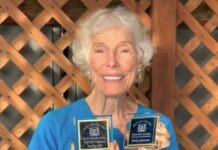Lignumvitae Key is in the Islamorada area of the Upper Keys. The island is a bit off the beaten path because it was never connected by the Key West Extension of Henry Flagler’s East Coast Railway or the Overseas Highway. Like many islands making up the approximately 1,700-island archipelago, Lignumvitae Key is home to fantastic history.
In last week’s column, we explored some of the island’s early names and prehistoric history; now, we will dig into the island’s evolution after Florida became part of a burgeoning United States.
It has never attracted a large population but has been home to a handful of people over the years. The first man recorded living on the island in the years after it became an American territory was Captain Rooke. William Hackley, a salvage lawyer from Key West, recorded his presence in an 1831 diary entry. According to Hackley, he witnessed Captain Rooke clearing land on the island and building a house. During Hackley’s visit to the island, he set traps hoping to catch a few raccoons, but when he returned the following day to check, his traps were empty.
By 1834, a man named Joseph Lewton was building a home on the island. By occupying the island, he hoped to make a preemption claim on the land. All indications are that by the time he arrived on the island, Captain Rooke was no longer living there. The next recorded inhabitant came decades later. He was a sizeable Norwegian sailor named Captain Cole who arrived circa 1868. Cole is described as an educated man with a bookshelf in his home filled with books written in several languages. Cole cultivated watermelons and sold them in Key West.
In 1879, Lignumvitae Key was surveyed by a representative of the U.S. government. After that piece of red tape was waded through, the island became available for sale. Captain William H. Bethel of Indian Key became the first official owner of the island. He paid 75 cents per acre in 1881. Bethel had been overseeing a small sisal plantation on the island, hoping that the fiber it produced would be a profitable crop. It was not, and he switched to growing pineapple and watermelon.
Bethel’s island farm was not long-lived, and, in 1888, he sold it to the brothers Thomas A. and Edward A. Hine for $2,000 – it was a handsome profit. The Hine brothers invested in coconut crops. When the island was sold in 1919, coconuts continued to be the preferred cash crop.
The Biscayne Chemical Company, William John Matheson, president, bought the island. Matheson had been overseeing coconut plantations on Key Biscayne and at least two other farms on Upper Matecumbe Key. After the island was purchased, Matheson authorized the construction of a two-story, four-bedroom coral-rock house that still stands today. In the years that followed, additional improvements to the island were made, including the clearing of land, construction of a cistern to collect rainwater, and the development of a windmill that was erected to provide electricity in 1929. It stood 87 feet tall. The following year, William Matheson died of a heart attack while aboard his yacht as it navigated the Straits of Florida. His son, Hugh Matheson, took control of the property.
It was Hugh who brought a menagerie to roam about the island. Among the addition of several other species, he introduced peacocks, burros from Mexico, Angora goats from India, and giant Galapagos tortoises. Due to behavioral problems, the goats and tortoises were a short-lived experiment. The goats were shipped off because they kept butting their heads against indigenous trees and knocking them over because of the shallow nature of their root structures.
The giant tortoises were carted off to the Crandon Park Zoo because they preferred the exotic succulents to the indigenous cactus they were brought in to devour in the first place.
It was Hugh who had six cannons, which that currently festoon the gently sloping lawn leading away from the coral rock house, brought to the island. The cannons were salvaged at Carysfort Reef from the wreck of the H.M.S. Winchester that sank in 1695. They arrived in 1938. After the 1953 death of Hugh Matheson, the island was sold to a group that nearly destroyed its integrity.
Three individuals from South Florida purchased the island for $125,000. The minority owners were Dr. Nelson Pearson, a physician in Coral Gables, and J. Abney Cox, a prominent Homestead potato farmer. The significant shareholder was Dr. E.C. Lunsford, a Miami dentist. Lunsford planned to develop the island with beaches, boat ramps, public roads and a golf course. To make the island more accessible, he spearheaded an action to build a causeway that would bridge Lignumvitae Key to the Overseas Highway.
The feat was nearly accomplished. Fortunately, Captain Al Lipford, a local fishing guide, learned of the plan and formed the Citizens Council of Monroe County. They circulated petitions that garnered the necessary signatures to squash the project. Instead, the island has been conserved, and the last virgin tropical hammock in North America was protected. The State of Florida purchased it and nearby Shell Key for just under $2 million. The Nature Conservancy contributed $200,000 toward the purchase. The island is now home to Lignumvitae Key Botanical State Park – the first botanical state park in Florida’s history.





















